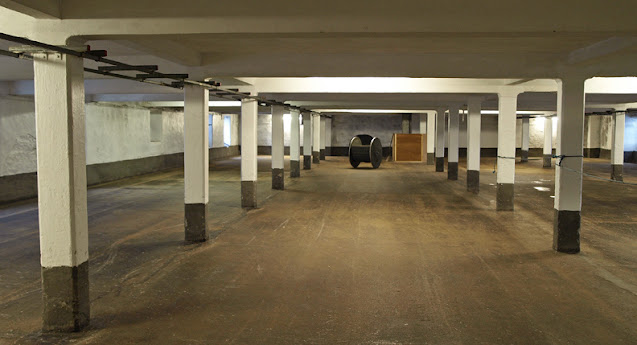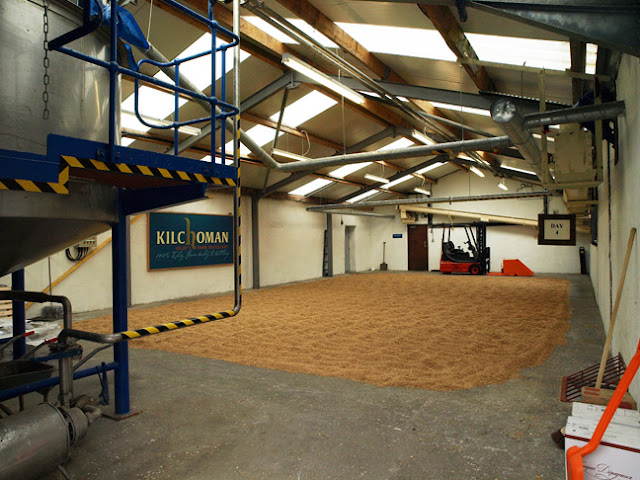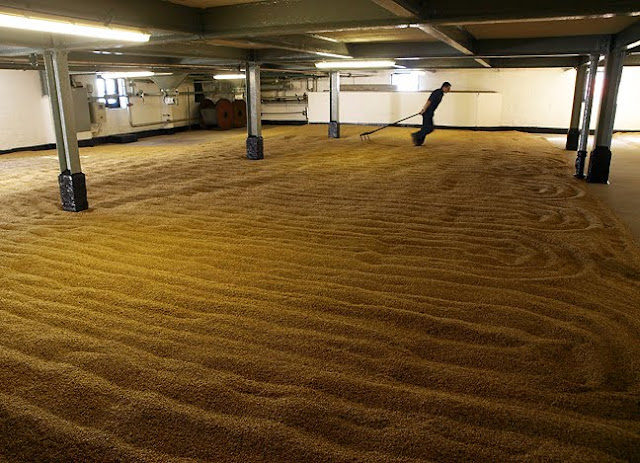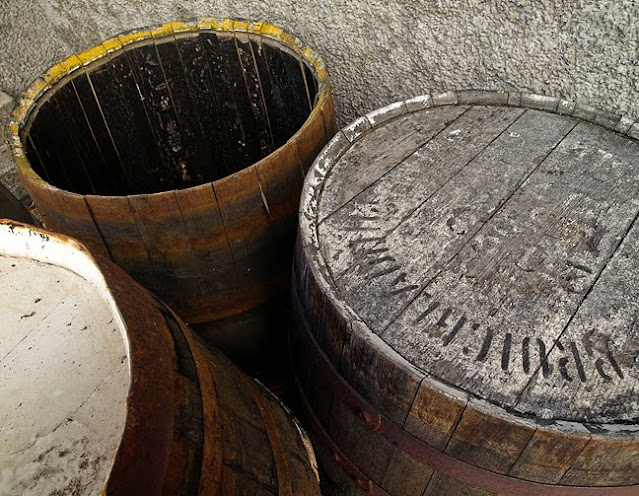I got thinking more about heat after my last post and realized just how prevalent it is in the whisky making process, and that I'd overlooked some of my photographs reflecting the subject which may be of interest to you. So I guess this is part two.
A couple of the photos have an annoying lens shadow at the bottom of the image, for which I apologize. I would normally not hesitate to excise such offences to my aesthetic sensibilities, however I felt that the subject matter would have suffered somewhat if I had cropped them out. So be it...I'll just have to do the suffering with a cringe or two every time I see them.
Forsyth's, in the town of Rothes in Speyside, have been crafting the lions share of Scotch whisky distillery equipment since the end of the nineteenth century. Dad and I were lucky enough to be graciously hosted by Mr. Richard Forsyth on a very interesting tour of the factory. I suspect this is the upper section of a still in the making. After having been heated by another coppersmith with a torch, this chap is beating the red hot metal into shape. The outer shell of a condenser is lying on the floor behind him.
Bowmore is one of the few remaining distilleries to floor malt some of their own barley. While germinating, the barley produces heat which must be regulated by turning over with wide flat shovels and raking, which is being done here. This also prevents the emerging rootlets from tangling into an unmanageable clump. As you can see, this process is quite labour intensive and back breaking so it is also done by machine.
This is a rare sight - too bad I messed it up with a shadow (cringe #1!). The inside of
Springbank's wash still with one of the few rummagers in existence. When a still was (is, in this case) directly fired with an open flame from below, as all stills used to be, there needed to be a method of preventing the contents from scorching. This was achieved by the rummager, a strip of copper chain mail which revolved inside the still in order to stir and scrape the bottom, not unlike what needs to be done when you make your porridge on the stove. This still is also heated by steam which travels through the pipes seen around the circumference.
The interior of a
Glen Scotia still. The silver pots radiate heat from steam inside the pipes which can be seen just below the liquid surface. They, of course, would be covered when the still is in full tilt boogie mode (one of the lesser known whisky distilling terms!...and an obtuse shoutout to Canadian backup bands everywhere!!).
The charring of the inside surface of whisky barrels is done in a couple of ways. At the
Speyside Cooperage where they refabricate zillions of barrels for the Scotch whisky industry, the barrels are stood upright with no ends above a furnace which blasts a huge flame through the barrel like a chimney. Very cool sight. This photograph, however, is from the cooperage at
the Balvenie where they do all their own barrel work on site. You're looking at the end of a barrel on its side, through a window I might add, which is being spun round by the two rollers at the bottom of the image. A flame is then blasted into the open end facing away from us, which can be seen shooting out the bung hole. It, too, is a pretty cool sight to see.
This is one of my favourite barrel images, so I'm glad to be able to share it with you to end off this post. It is a triptych of
Bruichladdich barrels, with one showing the result of the interior charring (or maybe it's from all of my hot air floating about!).
Slàinte














